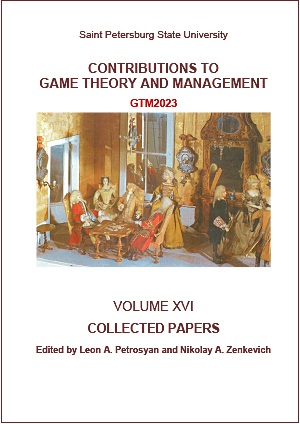Modified SEIQHRDP and Machine Learning Prediction for the Epidemics
Abstract
This paper is dedicated to investigating the transmission and prediction of viruses within human society. In the first phase, we augment the classical Susceptible-Exposed-Infectious-Recovered (SEIR) model by incorporating four novel states: protected status (P), quarantine status (Q), self-home status (H), and death status (D). The numerical solution of this extended model is obtained using the well-established fourth-order Runge-Kutta algorithm. Subsequently, we employ the next matrix method to calculate the basic reproduction number (R0) of the infectious disease model. We substantiate the stability of the basic reproductive number through an analysis grounded in Routh-Hurwitz theory. Lastly, we turn to the application and comparison of statistical models, specifically the Autoregressive Integrated Moving Average (ARIMA) and Bidirectional Long Short-Term
Memory (Bi-LSTM) models, for time series prediction.
Keywords:
dynamics model, Runge-Kutta, ARIMA, Bi-LSTM model
Downloads
References
Bozdogan, H. (1987). Model selection and Akaike's information criterion (AIC): The general theory and its analytical extensions. Psychometrika, 52(3), 345–370.
Chicco, D., Warrens, M. J. and Jurman, G. (2021). The coefficient of determination R-squared is more informative than SMAPE, MAE, MAPE, MSE and RMSE in regression analysis evaluation. PeerJ Computer Science, 7, e623.
Dong, E., Du, H. and Gardner, L. (2020). An interactive web-based dashboard to track COVID-19 in real time. The Lancet infectious diseases, 20(5), 533–534.
Gavin, H. P. (2019). The Levenberg-Marquardt algorithm for nonlinear least squares curve-fitting problems. Department of Civil and Environmental Engineering, Duke University, 19.
Gubar, E., Taynitskiy, V., Fedyanin, D. and Petrov, I. (2023). Quarantine and Vaccination in Hierarchical Epidemic Model. Mathematics, 11(6), 1450.
Gubar, E., Taynitskiy, V. and Zhu, Q. (2018). Optimal control of heterogeneous mutating viruses. Games, 9(4), 103.
Ho, S. L. and Xie, M. (1998). The use of ARIMA models for reliability forecasting and analysis. Computers and industrial engineering, 35(1–2), 213–216.
Jia, W. P., Han, K., Song, Y., Cao, W. Z., Wang, S. S., Yang,
S. S., Wang, J. W., Kou, F. Y., Tai, P. G. and Li, J. (2020). Extended SIR prediction of the epidemics trend of COVID-19 in Italy and compared with Hunan, China. Frontiers in medicine, 7, 169.
Kermack, W. O. and Mckendrick, A. G. (1927). A contribution to the mathematical theory of epidemics. Proceedings of the royal society of london. Series A, Containing papers of a mathematical and physical character, 115(772), 700–721.
Porta, M. (2014). A dictionary of epidemiology. Oxford university press.
Pastor, S. R., Castellano, C., Van, M. P. and Vespignani, A. (2015). Epidemic processes in complex networks. Reviews of modern physics, 87(3), 925.
Shahid, F., Zameer, A. and Muneeb, M. (2020). Predictions for COVID-19 with deep learning models of LSTM, GRU and Bi-LSTM. Chaos, Solitons and Fractals, 140, 110212.
Sun, H. C., Liu, X. F., Du, Z. W., Xu, X. K. and Wu, Y. (2021). Optimal control of heterogeneous mutating viruses. IEEE Transactions on Computational Social Systems, 8(6), 1302–1310.
Van den, D. P., and Watmough, J. (2002). Reproduction numbers and sub-threshold endemic equilibria for compartmental models of disease transmission. Mathematical biosciences, 180(1–2), 29–48.
Wonham, M. J. and Lewis, M. A. (2008). A comparative analysis of models for West Nile virus. Mathematical epidemiology, 365–390.
Downloads
Published
How to Cite
Issue
Section
License
Articles of "Contributions to Game Theory and Management" are open access distributed under the terms of the License Agreement with Saint Petersburg State University, which permits to the authors unrestricted distribution and self-archiving free of charge.




